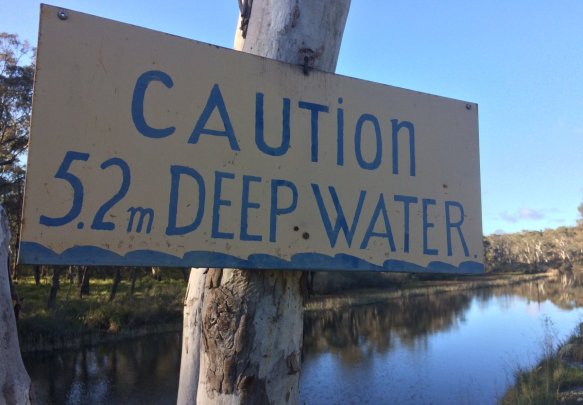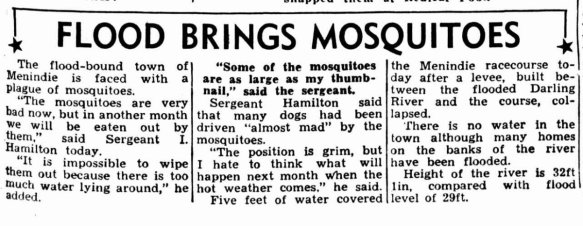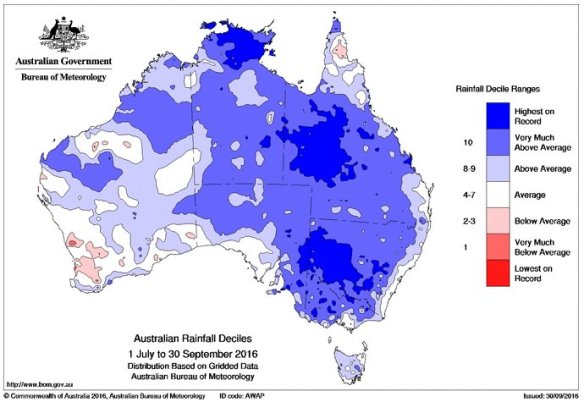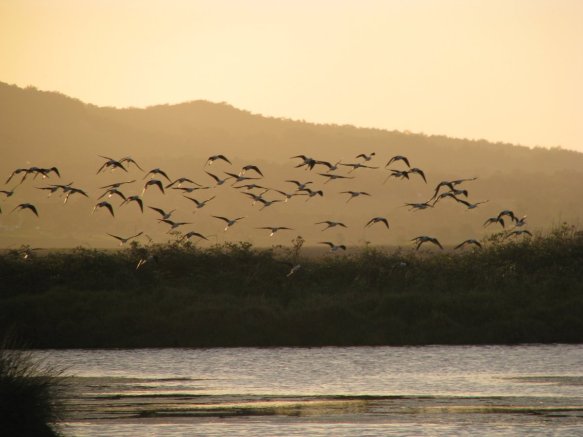This is a special guest post from Dr Abbey Potter, Senior Scientific Officer, Environmental Health Hazards, WA Health. I’m currently mentoring Abbey as part of The Public Health Advocacy Institute of WA (PHAIWA) Mentoring Program. Its been a great experience as we navigate through some of the strategies to raise awareness of mosquito-borne disease and advocate for better approaches to addressing the public health risks associated with mosquitoes.

Living in WA, we’re all too familiar with the pesky mosquito. We know they bite but what we often don’t consider is that they can transmit serious and sometimes deadly diseases. In fact, a recent survey of locals indicated that knowledge of mosquito-borne disease is pretty limited, particularly among younger adults aged 18-34 years and those living in the Perth Metro. It’s pretty important we’re aware of the risks posed by these pint-sized blood suckers and how you can avoid them… and here’s why!
The Facts
On average, more than 1,000 people will be infected with a mosquito-borne disease in WA every year. Our mossies can transmit Ross River virus, Barmah Forest virus, West Nile virus (Kunjin substrain) and Murray Valley encephalitis virus. All four cause diseases that are debilitating at best, causing weeks to months of symptoms. Murray Valley encephalitis is limited to the north of the State but is so serious it can result in seizures, coma, brain damage and even death.
Forget the bush, most people bitten in their own backyard. West Aussies are all very prone to getting eaten alive while socialising outdoors but if you’re up in the north of the State, you’ve also got a much higher likelihood of being bitten while boating, camping or fishing or working outside, compared to the rest of the state.
And don’t think you’re off the hook when you head off on holidays. A further 500 WA residents return from overseas travel with an exotic mosquito-borne disease every year. Heading to Bali? Beware of dengue, especially young adult males who return home with the illness more than others. There is limited mosquito management in many overseas countries where disease-transmitting mozzies can bite aggressively both indoors and throughout the day. This catches West Aussies off guard, as we are accustomed to mozzies biting outdoors, around dusk and dawn. When you’re in holiday mode it’s likely that you’ll be relaxing, having a couple of drinks and not thinking about applying repellent. Oddly enough, mosquitoes may actually be more attracted to people whose body temperature is higher. This happens naturally when you consume alcohol, so best pull out the repellent before you crack your first beer.
Despite our attractiveness to mosquitoes, we aren’t really aware of the most effective ways to avoid bites or how we can do our bit to reduce breeding in our own backyards. If you live by the mantra Cover Up. Repel. Clean Up you’ll have no problems!

Western Australia has some amazingly beautiful wetlands but these saltmarshes around Mandurah can produce large populations of nuisance-biting mosquitoes!
Cover Up
If you know you are going to be outdoors when mosquitoes are active, wear loose, long-fitting clothing that is light in colour. Believe it or not, mosquitoes can bite through tight pants as tough as jeans – I’ve witnessed it!
If you’re staying in accommodation that isn’t mosquito-proof, consider bed netting.
Try to keep children indoors when mosquitoes are most active. If exposure can’t be avoided, dress them appropriately and cover their feet with socks and shoes. Pram netting can also be really useful.
Admittedly, it’s not always practical to wear long sleeves during our warm summer nights, so there are going to be times when you need to use repellent. Choose a product that actually works and apply it appropriately so it does the job. Despite our best intentions, this is where we often go wrong. There are a few basic things to cover here, so stick with it!
Ingredient: Science tells us that the best active ingredient for repelling mosquitoes is diethyltoluamide (DEET for short) or picaridin. You need to look for either one of these names on the repellent label under the ‘active constituents’ section.
Unfortunately, natural repellents and anything wearable (e.g. bands, bracelets or patches) have very limited efficacy. Experts don’t recommend you use them and I consider this very wise advice. It only takes a single mosquito bite to become infected and chances are you will receive at least one if you rely solely on a product of this nature. It just isn’t worth the risk.

Percentage: The next thing to consider is the percentage of the active ingredient. This can range anywhere from 7% to 80% which can make choosing a repellent confusing. Just remember, the higher the percentage, the LONGER the product will remain active for. It doesn’t mean it will repel mosquitoes better.
A repellent containing 16-20% DEET will provide around 4-6 hours of protection, and is a good place to start. Repellents labelled ‘tropical strength’ usually contain greater than 20% DEET – they are useful when you spend longer periods exposed to mosquitoes or if you are heading to a region where dengue, malaria or Zika is problematic. Kids repellents usually contain picaridin or <10% DEET.
Sometimes it can be tricky to work out the percentage of the active ingredient. You can see the Bushmans example below states this clearly, but the other bottles list the ingredient in grams per litre (g/L). No need for complex maths – just divide by 10 and you have the magic number! For example, the RID label below reports the product contains 160g/L of DEET. This would convert to 16% DEET – easy!
You can see a few examples here of effective repellents:

How to Apply: No doubt we would all prefer if repellents didn’t feel quite so gross on our skin or didn’t smell so bad. Even I have to admit that before I moved into this field, I was guilty of putting just a dab here and a dab there. Unfortunately, this is flawed logic that will only result in you being bitten!
Repellents must be applied correctly to be effective. That means reading the label and applying it evenly to all areas of exposed skin. Remember to reapply the product if you are exposed to mosquitoes for longer than the repellent protects you for. You’ll also have to reapply the repellent after sweaty activity or swimming.
For more information on repellent use in adults and children, click here.
Clean Up
Mosquitoes need water to breed, but only a very small amount. Water commonly collects in a range of things you may find in your backyard including pot plant drip trays, toys, old tyres, trailers and clogged up gutters. Mosquitoes also love breeding in pet water bowls, bird baths and pools if the water is not changed weekly or they are not well maintained. Rain water tanks can also be problematic so place some insect proof meshing over any outlets. When you’re holidaying, cover up or remove anything that may collect water.
**
If you need more official info from WA Health about mosquito-borne disease or simple ways to prevent being bitten click here. And if you want to read more about how much West Aussies know (or don’t know) about mossies, check out Abbey’s excellent paper here! Joint the conversation too on Twitter by following Abbey and Cameron.




